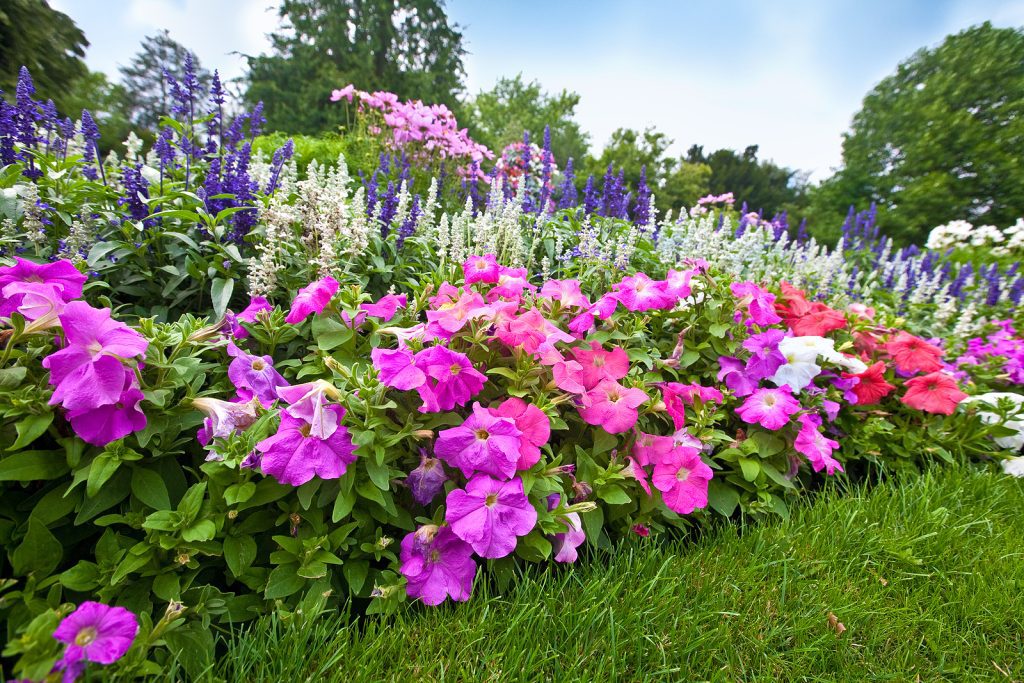Albuquerque Landscaping Perennial Planting Game Plan for Fall 2022

After a long and scorching summer, the arrival of October with its more comfortable temperatures is a welcome change. The arrival of fall not only ushers in crisp misty mornings, golden grasses, and silvery puffy clouds, but it also brings with it the ideal opportunity to plant more perennials. The soil and air temperatures throughout autumn present the ideal conditions for root establishment. Whether you are adding to an existing plant or establishing a whole garden, these parameters are present.
Additionally, planting in the fall provides a significant head start on gardening in the spring, which may even free up additional time for other spring pursuits. If you are used to planting only in the spring, the following information is important to remember as you plan an autumn plant installation.
At the close of the summer, it is time to take stock
At the end of the summer, it is not difficult to recall how far the garden has come. Your observations from the previous season are still visible: where to add a tall plant with spiky branches, which areas needed more ground cover, spots that could use blooms from earlier seasons, and so on. Looking at the garden after a year’s worth of development can assist you in more clearly visualizing the potential changes you’re thinking about making. Prepare yourself. Determine which plants you need, and place your order as soon as possible.
When to start Planting
Installing transplants shouldn’t wait until the first howling of the bitter winds to begin (unless you live in zone 8 – 11, in which case you can pretty much plant any time of year). Because it takes time for plant roots to become established, you should strive to get your plants in the ground at least six weeks before the ground becomes completely frozen. We will begin sending out plant shipments during the second week of September.
Planting should begin earlier in the year for those who live further north. If you place your plant order at the beginning of August, not only will you have the best selection of plants, but you will also have a decent delivery window.
Ephemeral spring flowers should be planted in the early fall.
The optimum time to plant spring-blooming perennials is early in the fall, particularly those in the bare root form. It is best to plant in the fall while the earth is still warm because this will allow the roots ample time to fully establish themselves. The next spring, the plants will be able to emerge from their well-established roots, giving them a head start on the competition.
Soil Temperature.
Because the temperature of the soil is higher in the fall than in the spring, root growth is stimulated during this time of year. In addition, because the plants won’t be generating blooms, for the most part, they’ll have more energy to go toward root development.
Where Does Frost Fit In?
Frost will prevent the plant from growing above ground, but it will not destroy the plant itself. The roots will keep expanding until the soil becomes completely frozen.
The condition of the plant and its dormancy.
Many of our native perennials have completed their development cycles by the time the growing season comes to a close, and as a result, they may not be looking their very best. The fall season finds spring ephemerals in a state of full dormancy, with no signs of growth visible above the roots. Ephemerals are typically transported as bare-root stock because their roots completely die back. As autumn approaches, plants that bloom earlier in the summer will also be well past their prime and may appear worn out as they prepare to go dormant for the winter. Put simply, you should plant them with the same care that you would provide to a plant in the springtime that is healthy and green.
Watering.
Before you plant the seeds or cuttings, give the plants a good drink of water and wait for the roots to absorb them completely. They should be watered once a week until the earth freezes. The cooler temperatures, the lower light angle, and the shorter days all contribute to a general reduction in the number of water plants use throughout the fall.
Mulching.
It is not necessary to apply mulch right away after performing fall transplanting. Even though it’s October, the new growth will still benefit from the sun’s soil warming. When the winter weather settles in, you should mulch the transplants. You should apply mulch when the nighttime temperatures are constantly at or below 32 degrees Fahrenheit, and the soil is beginning to freeze. The leaf litter, other spent plant material, straw, and similar materials can all be used as mulch. After the freeze-thaw cycles have finished in the spring, remove the winter mulch from the beds.
Avoiding the effects of frost heave.
Once the plants are established in the ground, freezing, and thawing of the soil can cause a phenomenon known as “frost heave.” This occurs when the thawing soil causes plants that aren’t fully anchored to rise out of the soil, which places the plant in jeopardy of being killed by cold temperatures. After the ground has completely solidified due to freezing, a few inches of straw mulch should be put around the transplants. Covering the ground surrounding the plants with a thick layer of straw will prevent the ground from thawing. After they have been mulched, you will be prepared for the winter. When spring arrives, remove the mulch from around the plants to make it possible for the soil to warm up around the plants more quickly.
